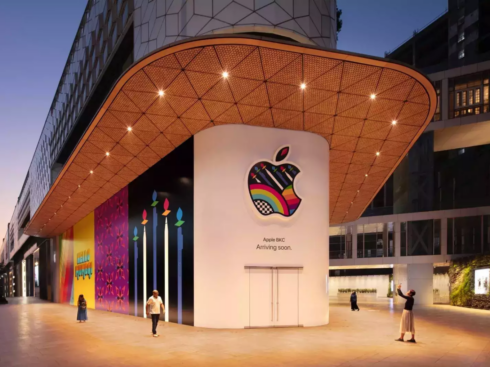SUMMARY
Plus a bunch of questions you need to answer before the launch
If you asked me, I’d say:
The biggest reason most startups fail is because they don’t build up to their launch and they don’t market from day one.
It’s like the 50/50 rule from Traction:
Traction and product development are of equal importance and should each get about half of your attention. This is what we call the 50% rule: spend 50% of your time on product and 50% on traction.
Imagine the following scenario:
You’ve worked hard to build the “perfect” app. You’ve fixed any possible bugs, made it look beautiful, and just “know” your market’s out there. On the day of the launch maybe you get lucky and a couple of people write about it, and maybe you even get on Product Hunt. You’re thinking, “wow, I’ve made it”. After the buzz dies down, you’re left with a thousand or so customers who don’t stick around much, and your bounce rate is so big, it would look great if you replace “bounce” with “conversion”.
What happened?! Simply put, you relied on things that don’t last: both press and Product Hunt will give you a nice boost, but you need to build a steady foundation first in order for the buzz to continue building.
What’s Your Main Metric?
Even when you think your app is doing well, it might be dwindling, and by the time you realize, it would be too late, and you’d have to start from the beginning. That’s why you have to have someone on the team who cares about metrics and measures practically everything.
Question: What are you measuring?
If it’s traffic traffic, that won’t help you long-term.
If it’s conversions, great! But are people who converted sticking around or have they abandoned your app right after they installed it? If it’s the latter, I suggest you devise an evil plan to email them a week after and see what went wrong. Maybe there’s a good reason and they can tell you what to improve.
If it’s how engaged people are with your product, I congratulate you. You’re on the right track because retention is the most elusive of metrics but also the most beautiful. Basically, it’s the white fox of the startup world.
I’m fed up with unicorns anyway.
Timing Is Everything (That, and foreplay.)
So you’ve got an app. And a landing page with cute pictures, maybe you’re on twitter, facebook, and you’re going through the motions to be social and human and … wait a second, how long have you been doing this for?
If you just started because you’ve just launched, I think you missed a few steps in between. Experts advise to start marketing as soon as your idea is born. Guy Kawasaki, for example, uses a very clever publishing model where he crowdsources his books’ chapters and asks for feedback. So what he’s doing is getting people’s interest and their investment into the product way before it gets out. That’s classic foreplay.
The longer you stagger the release, the better, but there’s also the other side of the coin — telling people “this amazing app is launching soon” and one year later it’s still a vacant twitter account and no updates in sight.
You have to find the balance and set your own pace. It’s worth it.
How Are You Luring Potential Users?
I was going to write an entire blog post about “the common denominator of viral apps”, but this will do. You’re probably thinking it’s something super sexy, but it’s rather something super simple — it’s freebies.
Why do you think all the best marketers offer free ebooks on their sites?
Because freebies equal subscriptions. And every good marketer knows that email is the Holy Grail. Content may be King and Social it’s Queen, but email is the ultimate goal because it’s the most direct way you can contact someone. Everybody has just one inbox (or at least one main one) and they covet it, so when they subscribe, you’ve entered their shrine.
Here’s what the experts do — set up a landing page and give something for free. Or only give early access to some people. Or better yet, release your app for free and show people how fun it is to use before they have to subscribe. Meerkat shows everyone the streams without signing up. Slack and buffer are free until you want the “special features” and by then then you’re hooked.
My point is, give something for free before you ask for anything in return. And NEVER ask for my credit card at the start. Huge turn-off.
Always Look For New Channels & Laser Focus On The Best Ones
I’m a fan of the book Traction. In it, you can read about the “Bullseye Framework”. Basically, you have to do little experiments to find the channels that work for you, but you must never say “no, this won’t work” until you’ve tried it.
Once you find something that works, you must really hone in on it. For example, it might be a specific user segment or a specific social platform. Whatever it is that’s really bringing the big bucks, milk it until the cow’s empty. And then do more experimenting to find other channels.
I think you’re supposed to focus on 3 channels and work on those, but never spread yourself too thin. I’m assuming you’ve done your market research and you know where your users hang out by now, so get going.
How Are You Engaging Users?
You can’t just expect people to use your app. It doesn’t happen.
What happens is — people see something cool, they think about trying it but without context or an additional reason to carry on, their interest fizzles out.
In this case, I recommend finding a way to engage your early users. I mean the ones that are really excited about the product. Whether they have four stars on MailChimp or they’re the ones who always give you feedback or reach out on twitter, whatever they do, they’re easy to spot.
Think about it like this: Your goal should not be finding new people endlessly. It should be keeping your most engaged users indefinitely.
Product Hunt is an excellent example of this: Ryan Hoover personally reached out to a bunch of people at the start, he constantly asked for feedback on everything — new features, new mockups — and thus kept the most engaged users equally as engaged as the day they signed up.
It’s why I open Product Hunt daily. Because he gave me a reason to stick around, then the product became a habit, and BOOM. I am hooked.
Encouraging Users To Spread The Word
Referrals are usually the most dependable source of conversions. Whether you have launched already or you’re building up to it, it’s important to encourage your users / beta testers to share the app with their friends.
Some marketers use “tweet to download” gimmicks, but I personally prefer well-placed buttons and opportunities to share on social. Furthermore, if your product is good and you’re engaging your users, chances are word-of-mouth will happen naturally. That’s usually the tipping point.
Finally, never assume your work is done. Keep experimenting and iterating because people will not be interested forever. Haven’t we seen enough buzzed-out products that have disappeared a month after launching?
Presenting: The Meeting Facilitator Canvas
All Of The Above? [Case Study]
I can’t really give an example other than my own startup because those are the metrics and results I know best, so let’s go with that.
Here’s how we do it at Amazemeet:
- Key metric: Engagements with the Meeting Facilitator Canvas (yep, the pasty thing on the left there)
- Timing/foreplay: We’re staggering the launch by doing a 3-wave-beta process where we invite some of our subscribers to test the product so far. That way we can both engage and iterate on the product until it’s market-ready. Also, we have been marketing from Day One. ☺
- Luring users: We gave away the Meeting Facilitator Canvas for free, so we were able to collect some emails for further promotion of our app. The app is based on the Canvas, but way cooler.
- Channel focus:At first we went with content marketing, twitter, and trying to build a community on LinkedIn, but honestly, people were just not interested. So we switched to email marketing, viral marketing, and press (because of the results we got from Product Hunt), which according to analytics and product features, hold most promise.
- Engagement: We’re constantly encouraging people to try the Canvas and tell us how they liked it. Also, we’re building in-app (unobtrusive, we hope) features that will ask for their feedback and soon we’ll be building a community wherever we see fit.
- Referrals: Since we have a large list of subscribers already, this is not a priority… yet. What we need now is mostly feedback.
In the end, everything comes down to this:
Your app needs to have a userbase when it launches. Even if it’s not big, as long as it’s engaged, it will spread.
Mike (my co-founder) and I have come up with our own ideas of launching. For him it’s like a rocket — you know, all the parts releasing and boosting the important ones in space. It’s because he’s a developer.
My idea is that pre-launch is like a tsunami (hang in there) — each wave builds up on the last until one huge wave floods everything and brings after-waves until it settles. After that, ideally, there’s steady growth.
It’s in the molding of both that we have found our strategy.
So how have you been building up to your launch?



























